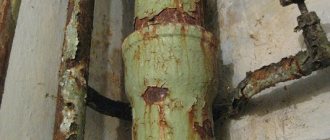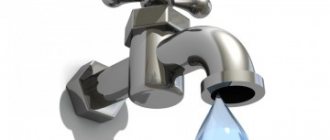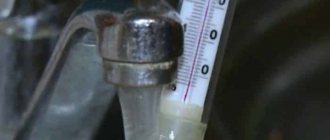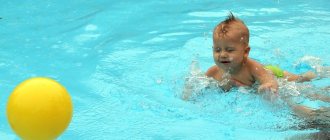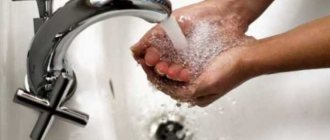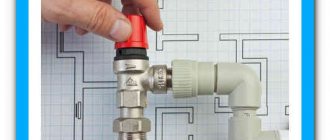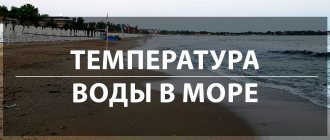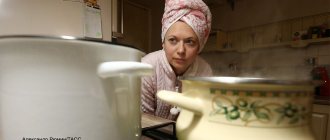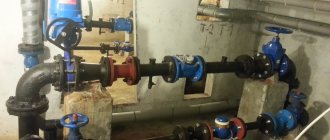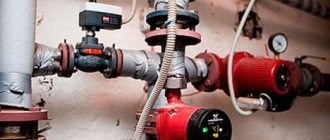Many residents of urban and other buildings are interested in what the standard hot water temperature in the apartment is in the last 2020–2021. This is important in order to understand whether fraud is occurring on the part of the apartment’s water supply service provider.
Temperature
If the hot water does not meet the standard and it is colder, this can lead not only to inconvenience in hygiene and housekeeping. Pathogenic microorganisms can develop in such water. That’s why you shouldn’t ignore the situation when the temperature of the hot water in the tap is below normal, be it in an apartment building (MCD) or a school.
What are the dangers of warm water?
If instead of hot water in the pipes in an apartment building there is warm water, this will lead to the active proliferation of pathogenic microorganisms. For many of them, a warm and humid environment is the most comfortable living conditions. This is why the water in the pipe should always be hot. Of course, if the heating is turned off and the water cools down to cold, this is not critical. The main thing is that it is not warm.
Temperature standards in 2021
Hot water supply and hot water temperature according to SNiP
Water supply is certain measures and activities aimed at providing the population, enterprises, and various types of households with water for industrial, domestic and drinking needs. Providing people with hot water is one of the main components of comfortable everyday life. The choice of liquid supply depends on why the hot water supply is needed in SNiP: central, or through local water heaters.
- More than 60 degrees - for central water supply systems connected to open types of heating systems;
- More than 50 degrees - for central water supply systems connected to closed heating systems;
- But less than 75 degrees – for absolutely all hot water supply systems.
What are the dangers of too hot water?
This is also unacceptable. In such a situation, there is a high risk of getting burned (for example, while washing in the shower). In addition, there are risks for the plumbing equipment in the house.
Compliance with temperature standards in an apartment building
And this is much more serious than just the danger to the budget from replacing certain system components. If a pipe, such as a polypropylene pipe, bursts at night and no one notices, there are many possible consequences.
At the same time, it can flood the neighbors’ apartment and cause them serious injuries.
Including burns to the respiratory and digestive organs if they sleep on their backs and flooding occurs from above. If the owners of the apartment where the accident occurs sleep on the floor, they can also receive multiple burns.
In addition, even more than cold water, hot water can cause enormous damage to the property in the apartment or apartments below. And to compensate for this, you may have to sell the apartment later. All these are good enough reasons to know the hot water standards and report where they should be if they are violated.
Checking the approximate temperature of cold and hot water supply
Hot water temperature at the entrance to an apartment building
Question:
What temperature should the hot water enter the house?
Answer:
If an apartment building is connected to an open hot water supply system, the temperature of the coolant at the entrance to the house is determined according to the temperature schedule for regulating the heat supply from the heat energy source.
This temperature schedule is included in the heat supply schemes for settlements, urban districts, developed by local governments, federal city authorities, legal entities or these entities jointly on the basis of Methodological recommendations approved by the joint Order of the Ministry of Energy of the Russian Federation and the Ministry of Regional Development of the Russian Federation dated December 29, 2012 N 565/667.
In accordance with Part 4 of Art. 1 of the Federal Law of December 7, 2011 N 416-FZ “On Water Supply and Sanitation” (hereinafter referred to as the Federal Law of December 7, 2011 N 416-FZ), relations in the field of hot water supply carried out using open heat supply systems (hot water supply), are regulated by Federal Law dated July 27, 2010 N 190-FZ “On Heat Supply” (hereinafter referred to as Federal Law dated July 27, 2010 N 190-FZ).
According to clause 21 of the Rules for organizing heat supply in the Russian Federation, approved by Decree of the Government of the Russian Federation of 08.08.2012 N 808 (hereinafter referred to as Rules 808), the heat supply agreement contains parameters for the quality of heat supply, the mode of consumption of thermal energy (power) and (or) coolant.
According to clause 1, part 10, art. 15 of Federal Law No. 190-FZ of July 27, 2010, heat supply to consumers is carried out in accordance with the rules for organizing heat supply, which are approved by the Government of the Russian Federation and must contain, among other things, the essential terms of the heat supply agreement.
In accordance with clause 2 of the Requirements for the procedure for the development and approval of heat supply schemes, approved by Decree of the Government of the Russian Federation of February 22, 2012 N 154, a draft heat supply scheme is developed by authorized local government bodies of settlements, city districts, federal city authorities, legal entities or specified persons jointly.
According to paragraphs. “z” clause 10 of the Requirements for heat supply schemes approved by Decree of the Government of the Russian Federation of February 22, 2012 N 154, the optimal temperature schedule for the supply of thermal energy for each source of thermal energy or group of sources in the heat supply system is included in the heat supply schemes of settlements and urban districts .
Methodological recommendations for the development of a heat supply scheme were approved by the joint Order of the Ministry of Energy of the Russian Federation and the Ministry of Regional Development of the Russian Federation dated December 29, 2012 N 565/667.
According to Part 11 of Art. 7 of the Federal Law of December 7, 2011 N 416-FZ, hot water supply is carried out in accordance with the rules of hot water supply approved by the Government of the Russian Federation.
According to paragraphs. “a” clause 17 of Rule 642, the guaranteed volume of hot water supply, the guaranteed level of hot water pressure in the hot water supply system and the temperature of the hot water are determined in accordance with the conditions for connection (connection) to the centralized hot water supply system.
According to clause 5 of the Hot Water Supply Rules, approved by Decree of the Government of the Russian Federation dated July 29, 2013 N 642 (hereinafter referred to as Rules 642), under a hot water supply agreement, the organization providing hot water supply undertakes to supply hot water of established quality to the subscriber through the connected network (including including temperature) in the mode of its supply determined by the hot water supply contract.
According to clause 15 of Appendix No. 1 to the Rules for the provision of utility services to owners and users of premises in apartment buildings and residential buildings, approved by Decree of the Government of the Russian Federation of May 6, 2011 N 354, the provider of utility services is obliged to ensure that the hot water temperature at the point of water collection meets the requirements of the law RF on technical regulation (SanPiN 2.1.4.2496-09 “Hygienic requirements for ensuring the safety of hot water supply systems” (hereinafter referred to as SanPiN 2.1.4.2496-09).
According to clause 2.4 of SanPiN 2.1.4.2496-09, the temperature of hot water at water points, regardless of the heat supply system used, must be no lower than 60 °C and no higher than 75 °C.
When connecting an apartment building to a closed hot water supply system, the management organization must provide such a temperature of hot water supplied by the resource supply organization that would ensure the standard values of the temperature of hot water at the water collection points of the house, taking into account the possible losses of thermal energy in sections of the networks from entering the house to these points.
According to clause 8.2 of SNiP 2.04.01-85* “Internal water supply and sewerage of buildings”, for a water riser or sectional unit, heat loss should be determined from the supply pipelines, including the ring jumper, taking them equal to 8.5 °C.
What does the standard for water depend on?
There are several factors that influence this parameter. Each of them is important. The water temperature for apartments in more or less developed countries is regulated precisely in accordance with these aspects.
Here is what affects such a standard in the MKD:
- type of water supply system;
- sanitary framework adopted in the state;
- to one degree or another - the standard of living in the country.
Faucet in the apartment
Scientists, as well as many officials, understand that normal water temperature is an important aspect of living standards. That is why it must have acceptable limits, not be too low or high.
Temperature of hot water in the tap according to the 2021 SNiP standard
It is important to know the lower and upper norms of DHW temperature, but it is equally important to know the norm of cold water. Like hot, it has restrictions on both the minimum and maximum. There are also justifications for this, which have been presented more than once by the scientific community.
Standard on tap
The table below shows the standard hot water temperature in an apartment building, which is relevant for 2021 in summer, winter, spring, and autumn. Perhaps in the future something will change in one direction or another. So you should always pay attention to the date of adoption of a particular law in order to avoid confusion and uncertainty. However, it is unlikely that the minimum and maximum thresholds will be crossed.
| Max. or min. meaning | Open system | Closed system |
| Maximum temperature | 75 degrees Celsius | 75 degrees Celsius |
| Minimum temperature | 60 degrees Celsius | 50 degrees Celsius |
As can be seen from the table, the minimum values vary, but the maximum temperature of hot water in the Russian Federation does not depend on the flow rate and type of water supply system. These requirements for DHW 2021 are mandatory in all regions. Therefore, in case of violation of these rules, a reaction from the administration should follow. The same thing happened in 2021.
It is important to understand that this is a violation of basic human rights, including the right to health.
It is also a violation of the rights of citizens, residents and guests of the country as consumers of services. And for such violations, the provider of these services may ultimately be held accountable.
On a note
Housing and communal services in Russia
In chronological order of their publications.
The headings of inactive (cancelled) regulations are crossed out.
For an abbreviated list, see the end of the file.
INTERNAL WATER PIPELINE AND SEWERAGE OF BUILDINGS SNiP 2.04.01-85*
see the current Code of Practice SP 30.13330.2012
... 2.2. The temperature of hot water at water intake points should be provided:
a) not lower than 60 °C - for centralized hot water supply systems connected to open heat supply systems;
b) not lower than 50 °C - for centralized hot water supply systems connected to “closed heat supply systems;
c) not higher than 75 °C - for all systems specified in subparagraphs “a” and “b”.
Set of rules SP 30.13330.2012
"INTERNAL WATER PIPELINE AND SEWERAGE OF BUILDINGS"
Updated version of SNiP 2.04.01-85*
“...5.1.2. The temperature of hot water at water collection points must comply with the requirements of SanPiN 2.1.4.1074 and SanPiN 2.1.4.2496-09 and, regardless of the heat supply system used, must be no lower than 60 °C and no higher than 75 °C.”
SanPiN 4723-88 “SANITARY RULES FOR THE CONSTRUCTION AND OPERATION OF CENTRALIZED HOT WATER SUPPLY SYSTEMS”
see current SanPiN 2.1.4.2496-09
(approved by the Chief State Sanitary Doctor of the USSR in November 1988)
“...1.7. The temperature of hot water in water supply points, regardless of the heat supply system used, must be no lower than 60°C and no higher than 75°C.
Note. For a hot water supply system made of galvanized pipes with a closed heating system, it is allowed to have a water temperature of no lower than 50°C and no higher than 60°C. Under these conditions, after carrying out repair work or eliminating emergency situations in the systems, it is necessary to maintain the temperature at 75°C for 48 hours.”
_________________________________________________________________________________
GOST R 51617-2000.
HOUSING AND COMMUNAL SERVICES. GENERAL TECHNICAL CONDITIONS
“... 4.16.3 The temperature of hot water at consumers’ water collection points should be from 50 to 75 °C [20. SanPiN No. 4723-88 Sanitary rules for the design and operation of centralized hot water supply systems]
__________________________________________________________________________________________
SanPiN 2.1.4.2496-09
HYGIENIC REQUIREMENTS FOR ENSURING THE SAFETY OF HOT WATER SUPPLY SYSTEMS
"1. Application area
1.1. Sanitary and epidemiological rules and regulations establish hygienic requirements for water quality and the organization of centralized hot water supply systems (hereinafter referred to as DHW), as well as rules for monitoring the quality of water supplied to DHW, regardless of departmental affiliation and forms of ownership.
1.2. These sanitary rules are mandatory for all legal entities and individual entrepreneurs whose activities are related to the organization and (or) provision of centralized hot water supply systems...
2. General provisions
…2.3. Sanitary and epidemiological requirements for centralized hot water supply systems are aimed at:
- prevention of contamination of hot water with highly contagious infectious pathogens of viral and bacterial origin that can reproduce at temperatures below 60 degrees, including Legionella Pneumophila;...
2.4. The temperature of hot water in water collection areas, regardless of the heat supply system used, must be no lower than 60 C and no higher than 75 C.
3. Requirements for the design, construction, operation of centralized hot water supply systems
3.1.10. When operating the DHW, the water temperature at the water intake points should not be lower than + 60 ° C, the static pressure is not less than 0.05 mPa, with pipelines and water heaters filled with tap water….
“RULES AND STANDARDS FOR TECHNICAL OPERATION OF HOUSING STOCK”
(approved by the Post of the State Construction Committee of the Russian Federation dated September 27, 2003 No. 170)
“... 5.3. Hot water supply
5.3.1. ... The temperature of water supplied to water points (taps, mixers) must be at least 60 degrees. C in open hot water supply systems and at least 50 degrees. C - in closed. The water temperature in the hot water supply system must be maintained using an automatic regulator, the installation of which in the hot water supply system is mandatory. The water temperature at the outlet of the water heater of the hot water supply system must be selected from the condition of ensuring the normalized temperature at the water supply points, but not more than 75 degrees. WITH."
RULES FOR PROVIDING PUBLIC SERVICES TO CITIZENS
(Approved by Decree of the Government of the Russian Federation of May 23, 2006 No. 307)
see current Post. No. 354
"…Annex 1
…P. 5 Ensuring the temperature of hot water at the point of analysis:
not less than 60°C – for open centralized heating systems;
not less than 50°C – for closed district heating systems;
no more than 75°C - for any heat supply systems"
RULES FOR THE PROVISION OF PUBLIC SERVICES
TO OWNERS AND USERS OF PREMISES IN MULTIPLE-Apartment BUILDINGS AND RESIDENTIAL BUILDINGS
(Approved by Decree of the Government of the Russian Federation of May 6, 2011 N 354)
Annex 1
REQUIREMENTS
to the quality of public services
5. ...Ensuring compliance of the hot water temperature at the point of water collection with the requirements of the legislation of the Russian Federation on technical regulation (SanPiN 2.1.4.2496-09)
PS There is an interesting document: “DECISION OF THE SUPREME COURT OF THE RF OF MAY 31, 2013 N AKPI13-394”, which, among other things, establishes:
“SanPiN 2.1.4.2496-09, as follows from the content of its paragraphs 1.1 and 1.2, establishes hygienic requirements for water quality and the organization of centralized hot water supply systems (hereinafter referred to as DHW), as well as rules for monitoring the quality of water supplied to DHW, regardless of departmental affiliation and forms of ownership, and is mandatory for execution by all legal entities and individual entrepreneurs whose activities are related to the organization and (or) provision of centralized hot water supply systems.
According to the specified SanPiN, the temperature of hot water in places of water supply, regardless of the heat supply system used, must be no lower than 60 °C and no higher than 75 °C. These sanitary and epidemiological requirements for centralized hot water supply systems are aimed, among other things, at preventing contamination of hot water by highly contagious infectious pathogens of viral and bacterial origin that can multiply at temperatures below 60 degrees, including Legionella Pneumophila, as well as at preventing skin diseases and subcutaneous tissue, due to the quality of hot water (clauses 2.3 and 2.4).
Thus, the sanitary and epidemiological rules define the requirements for the quality of hot water supplied to consumers when providing public hot water supply services according to an indicator that ensures its safety, such as temperature. This indicator is characterized by a minimum (not lower than 60 °C) and a maximum limit (not higher than 75 °C) and does not allow deviations from the specified temperature regime , subject to which the quality of the public service is ensured. Hygienic requirements for ensuring the safety of hot water supply systems";
5.3.1 “ Rules and standards for the technical operation of the housing stock” (approved by the Post of the State Construction Committee of the Russian Federation dated September 27, 2003 No. 170);
Clause 5 of Appendix 1 “ Rules for the provision of utility services to owners and users of premises in apartment buildings and residential buildings” (approved by the Russian Federation Government Resolution dated May 6, 2011 No. 354).
Compiled by housing and communal services specialist Yuri Kalnin
Temperature of cold water in the tap according to the standard
It is clear that the temperature of cold water cannot be too high. Otherwise, it will become dangerous for the same reason as too cold hot water according to the sanitary rules of SanPiN.
Measuring the temperature of hot water and hot water in the tap
And washing under both types of water in the shower will be equally dangerous. However, according to SNiP (SP), the minimum should also not be exceeded. Otherwise, the water in the pipe will begin to freeze when consumed, and this sometimes leads to damage to the structure and further flooding.
It's not a matter of volume, because when water freezes, it becomes larger in volume. And plumbers often use a special tool that freezes the pipe in order to cut off the desired section and replace it with a new one without shutting off the water. But this does not make it safe for water to freeze in pipes.
How to measure DHW temperature
A thermometer with a scale of one hundred degrees Celsius is suitable for these purposes. The division value should ideally be at least one degree. The ability to carry out such standard measurements is necessary not only to understand the situation, but also to prove certain violations relative to the temperature norm. Otherwise, it will not be possible to substantiate claims against the management company (MC).
In the apartment
Here's how hot water temperature standards are measured in residential buildings according to regulatory documents:
- Open the tap. Wait three minutes until the stagnant liquid leaves, because its temperature is lower.
- Then place a container under the stream. However, it cannot be removed. When the container is overfilled and the water overflows, continue to hold it.
- A thermometer is lowered into the glass, closer to the center.
- When the degrees stop increasing, it is important to record the result obtained.
Filling a container with water, walking away and measuring the temperature is not an option, because by this time the liquid will have already cooled down.
That’s why you need to do this according to the standards described above. Of course, you can write down the resulting temperature result in a notepad. However, to be more convincing, it is better to film everything on a video camera, from the beginning of the process to its end.
Norms and rules for supplying hot water and cold water
Hot water temperature standards according to SanPin
SanPiN 2.1.4.2496-09, which were approved by the Decree of the Chief State Sanitary Doctor of the Russian Federation dated 04/07/2009 No. 20, set the minimum temperature of hot water supplied to apartments at 60°C. The same document also defines its maximum possible temperature, which is 75°C.
In addition, the above document also defines the maximum permissible deviations from these indicators. They are 5°C at night and 3°C during the day. It should be emphasized that these standards are designed to exclude the possibility of the proliferation of harmful microorganisms in hot water supply systems.
Experts, when calculating what temperature hot water should be, took this point into account. At the same time, hot water flowing from the tap should not cause thermal burns to the skin.
The powers to monitor the extent to which management and resource supply companies comply with these standards are assigned to the state housing inspection.
Separately, we emphasize that resource supply, and especially management companies, do not have the right to establish their own standards that differ from those contained in SanPiN 2.1.4.2496-09.
How to defend your rights in this aspect
First, you should complain to the housing and communal services about violation of standard temperature limits. A call is enough. After this, the dispatcher will ideally check whether there were any preventative measures or accidents. In such cases, the water is often turned off altogether. If this is the case, it will be communicated when everything is back to normal.
Boiling water
If no such reasons are found, the dispatcher is legally obligated to record the request of the resident of the apartment building, and then send an expert to check the input and not only whether the temperature has dropped too low.
Something about recalculating water charges
If the temperature in the tap is too low relative to SanPiN, the consumer has the right to recalculate. If the temperature of the hot water drops below 40 degrees, the tenant has the right to pay for such water as for cold water.
Consumption of hot and cold water according to standards
Including not during the heating season, because this has nothing to do with heating and batteries. Ideally, it would be worth checking the meters.
A lower payment will be charged until experts visit the apartment or house and establish that the hot water supply has returned to normal.
If the recalculation is refused, then the magistrate’s court of the region, territory or another can help. You can also contact Rospotrebnadzor. A simple refusal to pay will result in the water being turned off altogether or the supply of hot water only being stopped.
However, different situations occur. For example, one person writes on a forum on communal problems in Moscow and the Moscow region that when an inspector came to his residential building, the hot water temperature was normal, and then cold again. And this was repeated several times. As a result, he began to consume only cold water, which he heated through a heater installed in the apartment.
Metering devices in an apartment of an apartment building
The motivation for such an act is to know where the money is spent during the month.
Similar stories are found in St. Petersburg and other cities. Theoretically, if you have a greater evidence base and initiative, it would be possible to achieve compliance with the standard by contacting supervisory authorities. The main thing is to know what to do and where to go.
Closed and open heat supply system: features, disadvantages and advantages
Connection of heat supply to the network is carried out in dependent and independent ways, implementing closed and open heat supply systems. The first is to supply water directly - using pumps and elevator units, where it is brought to the required temperature by mixing with cold water. An independent method is to supply hot water through a heat exchanger. It is more expensive, but the quality of water for the consumer is higher.
We recommend reading: Child support for a book
The source of water heating is usually a gas or electric boiler. It is necessary to choose a method for flushing the system. In centralized systems, the hydrodynamic method is used. For autonomous use, you can use a chemical one. In this case, it is necessary to take into account the safety of the influence of reagents on radiators and pipes.
What other norm criteria are important?
The temperature of cold and hot water, for example, in a tap, is far from the only quality criterion according to GOST. A number of other points are also important. Namely: biological and chemical characteristics of water. And these factors are no less significant than temperature. Another thing is that checking them yourself is far from so easy.
In conclusion, it is important to note that the normal temperature of hot water in an apartment building in both 2021 and 2021 meets sanitary requirements. However, this temperature is not always observed. And it is important for residents of apartment buildings to be vigilant and inform the supervisory authorities if the water suddenly does not meet the standards.
Accurate measurements
The health of people who use such water depends on how quickly the situation with the temperature of the water supply to apartments is corrected. After all, water that is not warm enough is the optimal environment for pathogenic microbes. It can be harmful to health. That is why the water in an apartment’s tap must always meet established standards.
What are the types of hot water supply systems?
Currently, hot water supply is an integral part of the lives of most people on the planet. No apartment or residential building can live without it. Arranging a hot water supply system is a complex process; moreover, there are several types of connecting systems. In this article we will look at all hot water supply systems, calculations and types of water heaters.
We recommend reading: How and Who Can Take the Decision From the Bank From Pristov
A closed system implies separate operation of the coolant and hot water; it is also distinguished by the presence of a return and supply pipeline, which are used for circular circulation of water. Such a system will ensure normal pressure even when using a shower and sink at the same time. Among the advantages of the system, the ease of regulating the temperature of hot liquid is also noted.
